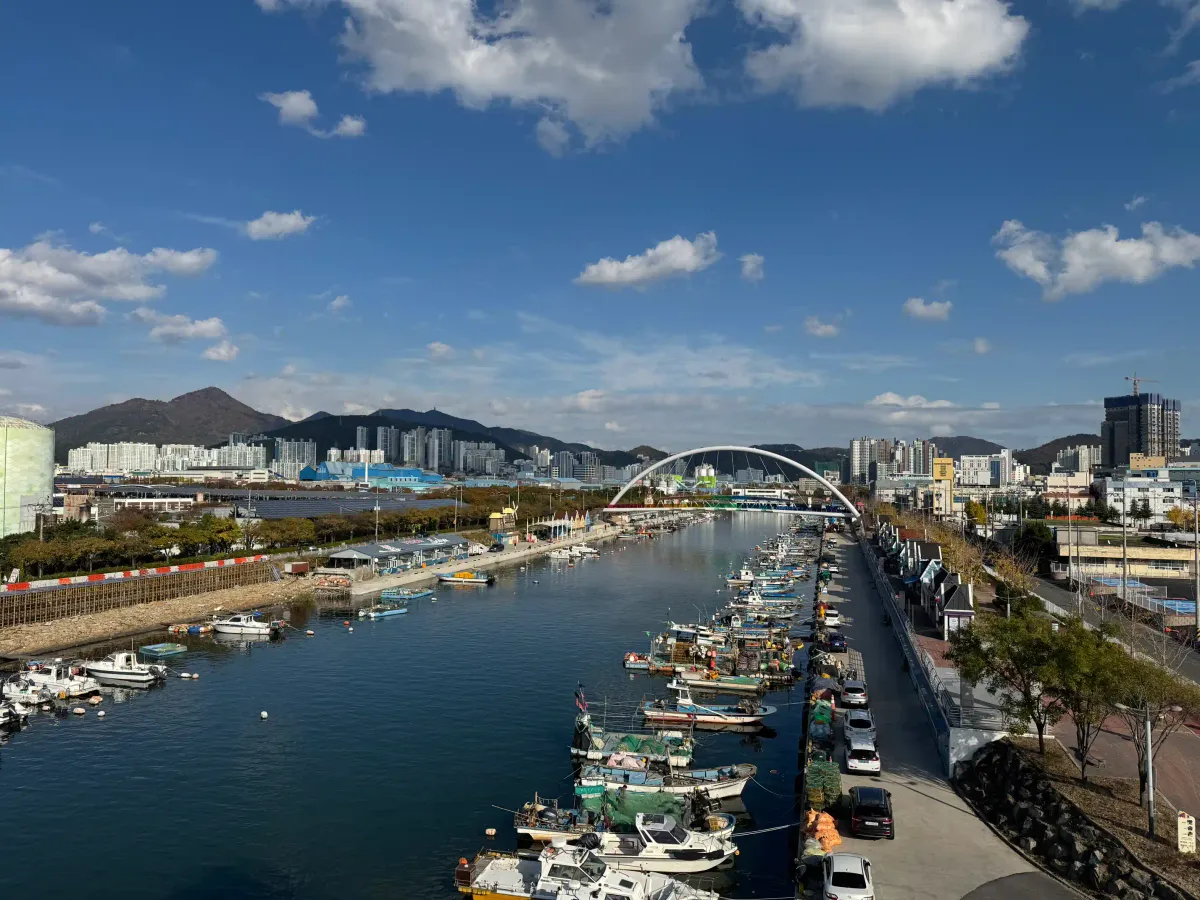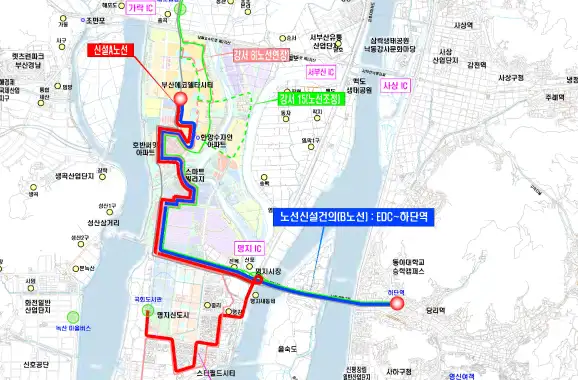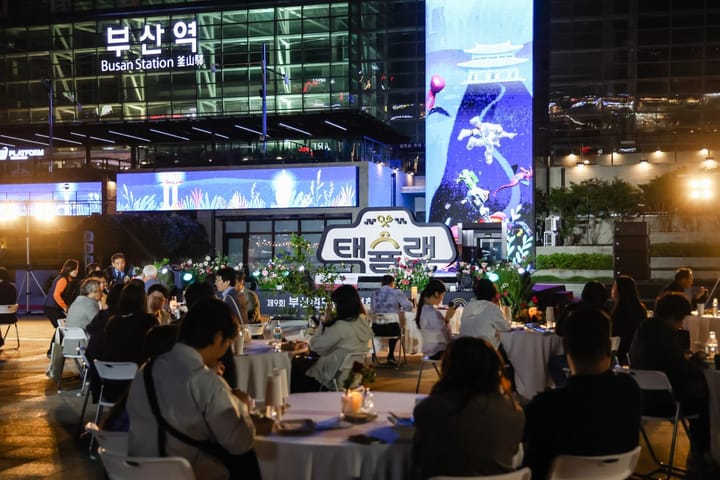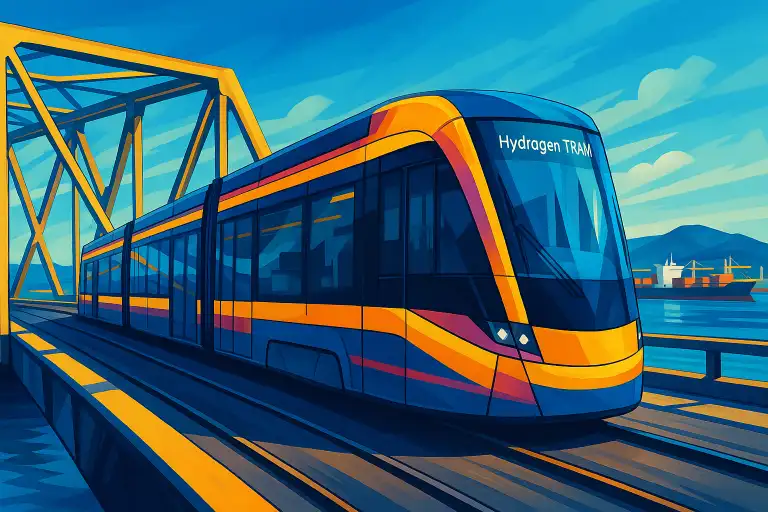Busan Isn’t Balancing Its Growth. It’s Avoiding Its History.
In its rush to modernize, Busan has developed a habit of building not toward its past, but around it. From Haeundae in the 1990s to Gangseo today, the city has preferred expansion over reinvestment—choosing new land over old neighborhoods, and visibility over inclusion.

Busan, South Korea — Urban policy, like architecture, is often defined not by what is built, but by what is systematically avoided. In Busan, South Korea’s second-largest city and a former industrial powerhouse, the concept of “balanced development” has become a cornerstone of municipal rhetoric. For more than a decade, the city has pledged to correct long-standing disparities between its eastern and western regions through deliberate, strategic growth.
But a closer look reveals a development model less concerned with balance than with repetition.
Instead of investing in the reinvigoration of aging districts or the diversification of its economic base, Busan has largely returned to a familiar strategy: identify large swaths of publicly owned land, convert them into high-rise residential zones, and market the results as evidence of progress.
This approach, first deployed during the rapid transformation of Haeundae in the 1990s, is now being replicated in Gangseo-gu, a previously underdeveloped area on the city’s western edge.
On paper, this looks like equity. In practice, it reproduces inequality.
Under the banner of “balanced development,” Gangseo has absorbed the vast majority of public investment allocated to the city’s west. Dozens of new housing towers now rise on reclaimed land, supported by sleek promotional campaigns that emphasize green space, innovation, and future-readiness.
Meanwhile, Busan’s actual urban core—the aging, high-density districts of the inner west—remains structurally excluded from the city’s future.
Areas like Saha and Sasang, once vital nodes in the city’s industrial economy, are no longer considered assets to be renewed but obstacles to be circumvented. Their infrastructural complexity, demographic age, and lack of investment appeal render them invisible in the city’s long-term planning documents.
In their place, the city has chosen ease: development on empty plots rather than engagement with existing communities.
Busan is not developing its neglected areas—it is avoiding them. And that avoidance is being framed as progress.
This piece examines how the city’s reliance on legacy development models—originally crafted for image-driven, high-return expansion in the 1990s—is now reshaping the political geography of western Busan. It interrogates how the language of balance is deployed to justify projects that deepen spatial inequality, and how the politics of convenience continue to override the realities of inclusion.
Because what is happening in Busan is not simply a failure of imagination.
It is the persistence of a strategy that has learned nothing from its past.
The 1990s Playbook – How Haeundae Set the Template
The roots of Busan’s current development model stretch back to the 1990s, when the city first began to reimagine its global identity. In the aftermath of South Korea’s democratic transition and amid a wave of economic liberalization, Busan’s leadership sought a new narrative—one that could shift the city from its industrial foundations toward a future grounded in international commerce, tourism, and visual prestige.
Haeundae, then a largely underdeveloped coastal district, presented the ideal canvas. It lacked the spatial density, industrial legacy, and regulatory complexity of the city’s interior. More importantly, it sat on publicly owned land—making it easier to control, commodify, and convert. What followed was a transformation defined not by social need, but by speculative potential.
Public land was rapidly repurposed. Private capital flooded in. Towering apartment blocks reshaped the skyline, as the city aggressively branded Haeundae as the symbol of modern Busan. Investments in infrastructure and amenities followed, but not with the goal of strengthening community resilience. Rather, they were curated to attract visitors, capital, and international attention.
This strategy did produce results, but of a narrow kind. Haeundae became a postcard—glittering, aspirational, and performative. Yet what it lacked was the substance of urban inclusivity. Its growth benefited investors and newcomers, while existing communities were displaced or priced out. What could have been a bridge between Busan’s industrial past and post-industrial future instead became a walled garden of prosperity, disconnected from the broader urban fabric.
More critically, the Haeundae project left behind a governing logic—a blueprint that prioritized land conversion over reintegration, and image production over structural equity. It demonstrated how a city could build fast, centralize control, and measure success not in lived outcomes, but in skyline silhouettes. It was a model designed not to mend urban inequality, but to bypass it.
Three decades later, that same logic remains intact—only now, it has moved westward. Gangseo-gu, once on the margins of the city’s development vision, has become its focal point precisely because it offers the same kind of administrative simplicity that Haeundae once did. Its open, state-owned tracts are easier to market, easier to plan, and crucially, easier to control.
There is no need to negotiate with longstanding communities, no political cost to demolition, no historical complexity to reckon with. And once again, the result is being framed as progress: eco-cities, innovation clusters, green corridors—visions untethered from the deeper question of what kind of city is being left behind in the process.
Busan did not learn from Haeundae’s exclusions—it learned how to replicate them, more efficiently.
Déjà Vu in Gangseo – New Land, Old Strategy
Gangseo-gu, once seen as a peripheral district at the far western edge of Busan, has now become the symbolic centerpiece of the city’s commitment to “balanced development.” Reclaimed land has been repurposed as the staging ground for an ambitious urban expansion, featuring sleek master plans, high-rise residential towers, and branded enclaves like Eco Delta City. The city presents this as a corrective gesture—a chance to redistribute investment, rebalance opportunity, and finally address decades of east–west disparity.
But behind the branding lies a familiar calculus.
What made Haeundae attractive to planners in the 1990s—its emptiness, its clarity, its amenability to control—is precisely what makes Gangseo attractive now. Here again, Busan finds itself working with land that is publicly owned, easily zoned, and unburdened by existing urban life. There are no legacy communities to consult, no dense industrial networks to restructure, no spatial complications to untangle. The city can build quickly, unopposed, and at scale.
The result is a development model more rooted in absence than inclusion. Projects are defined by what’s missing—people, memory, friction—rather than by what’s present. These spaces are designed from above: clean streetscapes, technocratic infrastructure, environmentally branded green zones. But what they lack is precisely what cities require to feel alive: jobs, culture, interaction, unpredictability, and continuity with the rest of the urban ecosystem.
Residents are drawn not by community, but by affordability and anticipation—often investing not in homes, but in assets. The result is a speculative landscape posing as a residential one.
In the meantime, older western districts—Saha, Sasang, even parts of Seo-gu—remain in institutional limbo: too politically complex to repair, yet too invisible to matter.
The city speaks of “west Busan” as if it were a coherent territory. But in reality, development has been hyper-concentrated in a single administrative unit: Gangseo. The language of equity masks a process of selective expansion, where a few zones receive the bulk of infrastructural and financial attention while others—dense, aging, and labor-based—receive little beyond aesthetic gestures or token programming.
There is a kind of urban amnesia at play here. The city forgets that west Busan was never empty. It was full—of factories, families, histories, and contradictions. Gangseo was not the west. It was outside it. And by choosing to build there, rather than within the communities that have sustained the city for decades, Busan has once again chosen what is administratively simple over what is socially necessary.
The narrative has changed—“balance” instead of “prestige”—but the strategy has not.
And when a city repeats its development formula under a new name, it does not correct history. It extends its consequences.
A Policy Built on Avoidance
Cities do not neglect old neighborhoods out of ignorance. They do so by design.
Urban policy often rewards what is legible, scalable, and fast. In this framework, development is not measured by what it sustains, but by what it can display. The more easily a project fits into budget lines, timeline charts, and architectural renderings, the more likely it is to receive funding, approval, and political backing.
This is what makes “new land” so seductive to city governments.
It presents no contradictions—no entangled ownership, no entrenched communities, no aging infrastructure to modernize piece by piece. It allows for linear progress. It’s a clean file in a messy cabinet.
In Busan, this preference has shaped not only where development happens, but what kind of development is even imaginable. When the city turned to Gangseo, it was not simply addressing a geographic imbalance—it was avoiding the administrative and political complexity of rehabilitating the old city core. A policy that appears future-oriented is, in practice, rooted in institutional risk aversion.
Revitalizing inner-west districts like Saha and Sasang would have required something far more difficult than planning permission: social trust.
It would mean engaging long-term residents, coordinating with small businesses, restoring outdated utilities, and—perhaps most critically—acknowledging the historical neglect that brought these districts to their current state. These are not technical challenges. They are political ones. And so, they are bypassed.
This logic is not exclusive to Busan.
It mirrors a broader trend in urban governance globally, where reinvestment is often displaced by real estate–driven expansion. In cities from London to Jakarta, from New York to Cape Town, "regeneration" has become synonymous with redevelopment, not repair. The most vulnerable areas are either demolished, rebranded, or left untouched until market forces find new use for them. Public institutions, faced with limited resources and political timelines, routinely choose efficiency over equity.
But what begins as a shortcut eventually becomes a habit. And that habit reshapes the city.
A governance culture built on avoidance doesn’t just fail to solve old problems—it manufactures new ones. By pouring infrastructure into untested geographies while leaving functional but fraying districts behind, cities increase spatial inequality, fragment transportation systems, and sever generational continuity. They produce places that are new but not livable, and others that are livable but left to decay.
In Busan, this approach has already hardened into policy form. What was once an exception in Haeundae has become the expectation in Gangseo. And what is justified today as strategic necessity will, in a decade’s time, become another cautionary tale.
Cities can be forgiven for failing to anticipate the future.
But it is far harder to excuse those who repeat the past—especially when the consequences are already visible.
The Demographic Fallout – Aging in the Shadow of Smart Cities
While cranes continue to reshape the skyline of Gangseo, much of Busan’s existing city is quietly graying.
Districts like Saha, Sasang, Seo-gu, and parts of Dong-gu are aging at some of the fastest rates in the country.
Fertility is in free fall, youth outmigration continues year after year, and entire neighborhoods have become what demographers call "retirement landscapes"—urban areas where the only growing populations are the elderly and the forgotten.
This isn’t simply a demographic trend. It is the spatial expression of policy decisions.
By concentrating resources into newly built zones, the city has accelerated the withdrawal of younger generations from its traditional core.
Job creation, education infrastructure, and cultural production have all migrated toward either Seoul or Busan’s newest frontier districts, leaving older areas with diminishing relevance and opportunity. As a result, the inner city is left with the people who cannot leave, while the people who can—do.
This is not an organic outcome.
It is the direct result of development that treats place as product.
New districts are constructed to attract capital and population from the outside.
They do not solve the problem of demographic decline—they simply rearrange it.
In Gangseo, this creates the illusion of renewal. But what it often produces in practice is a housing-first environment, disconnected from real economic ecosystems.
Employment opportunities remain limited, and few of the residents moving into the area are long-term community builders. The result is a fragmented urban structure: dense residential zones with minimal intergenerational exchange, no historical roots, and insufficient social support.
Meanwhile, in older districts, the crisis is not just statistical. It is visible.
Empty classrooms, shuttered clinics, vacant storefronts—these are the material consequences of a city that has chosen to build around its core rather than with it.
Demographic collapse is not merely about declining birthrates.
It is about the places that become unlivable not because they are broken, but because they have been abandoned by design.
And the more Busan pours investment into the margins, the more its center becomes a site of quiet decay.
The very neighborhoods that once anchored the city’s labor economy, sustained its social rhythms, and housed its multigenerational families are now left to shrink without support.
If development were truly balanced, it would ask: how do we retain the people who already live here—not just how do we attract new ones?
That question has yet to be seriously addressed.
And until it is, the city’s demographic future will continue to diverge—between smart cities that cannot hold their residents, and old cities that are simply waiting for theirs to disappear.
What a City Chooses to Remember
Every city tells a story about itself.
In Busan, that story has long been one of resilience, adaptation, and transformation—from port to powerhouse, from industrial base to global gateway. But stories evolve not just through what they include, but through what they choose to leave out.
The current narrative of “balanced development” is one such example: a policy framework that promises equity, while systematically investing in areas where development is easiest—not where it is most needed.
Rather than confront the challenges of aging districts, fractured infrastructure, and shrinking communities, Busan has opted to build around them.
It has taken the playbook of 1990s Haeundae—land conversion, speculative housing, image-based planning—and rebranded it for Gangseo, under the banner of western revitalization. The language has changed, but the logic has not.
What is striking is not that Gangseo is being developed, but that this development is being presented as redemptive—as if building something new on empty land absolves the city of what it has failed to sustain. In doing so, Busan is not simply reconfiguring its geography. It is reconfiguring its memory.
The neighborhoods of the inner west—Saha, Sasang, Seo-gu, and others—were not incidental to the city’s growth.
They were its foundation. And yet today, they occupy a space outside the vision of what Busan is trying to become.
They are too old to be promising, too complicated to be convenient, and too invisible to be prioritized.
This is the paradox of contemporary development:
Cities build to appear forward-looking, but often do so by erasing the very histories that made their future possible.
What would it mean for Busan to remember differently?
To treat density not as a problem, but as potential.
To see aging infrastructure not as a liability, but as evidence of past investment worth preserving.
To make urban planning not an act of avoidance, but of repair.
Balanced development, if it is to mean anything, must begin with the recognition that progress is not just about where a city is going.
It is also about what it chooses to carry with it—and what it cannot afford to leave behind.
Until Busan can look at its neglected districts and see not obsolescence, but obligation, it will continue building its future atop a silence of its own making.
And that silence, over time, becomes permanent.



Comments ()